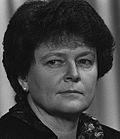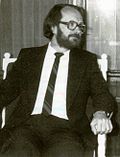| |||||||||||||||||||||||||||||||||||||||||||||||||||||||||||||||||||||||||||||||||||||||||||||||||||||||||||||||||||||||
All 155 seats in the Storting 78 seats needed for a majority | |||||||||||||||||||||||||||||||||||||||||||||||||||||||||||||||||||||||||||||||||||||||||||||||||||||||||||||||||||||||
|---|---|---|---|---|---|---|---|---|---|---|---|---|---|---|---|---|---|---|---|---|---|---|---|---|---|---|---|---|---|---|---|---|---|---|---|---|---|---|---|---|---|---|---|---|---|---|---|---|---|---|---|---|---|---|---|---|---|---|---|---|---|---|---|---|---|---|---|---|---|---|---|---|---|---|---|---|---|---|---|---|---|---|---|---|---|---|---|---|---|---|---|---|---|---|---|---|---|---|---|---|---|---|---|---|---|---|---|---|---|---|---|---|---|---|---|---|---|---|---|
| Turnout | 82% | ||||||||||||||||||||||||||||||||||||||||||||||||||||||||||||||||||||||||||||||||||||||||||||||||||||||||||||||||||||||
| |||||||||||||||||||||||||||||||||||||||||||||||||||||||||||||||||||||||||||||||||||||||||||||||||||||||||||||||||||||||
 Results by county | |||||||||||||||||||||||||||||||||||||||||||||||||||||||||||||||||||||||||||||||||||||||||||||||||||||||||||||||||||||||
| |||||||||||||||||||||||||||||||||||||||||||||||||||||||||||||||||||||||||||||||||||||||||||||||||||||||||||||||||||||||
Parliamentary elections were held in Norway on 13 and 14 September 1981. [1] The elections led to the end of the Labour Party minority government and the creation of a Conservative Party minority government. [2]
Contents
- Contesting parties
- Leadership changes and challenges
- Campaign
- Slogans
- Debates
- Results
- Voter demographics
- Seat distribution
- Notes
- References
The Conservative Party made the strongest gains in the election. The Labour Party remained the largest party in the Storting, winning 66 of the 155 seats.
Attempts were made to form a majority coalition government with the Conservative Party, Christian People's Party and Centre Party, but the negotiations failed. [2] The Conservative Party subsequently formed a minority government with parliamentary support from Christian People's Party and Centre Party. [2]
In 1983 a majority coalition government with the Christian People's Party and the Centre Party was established.






